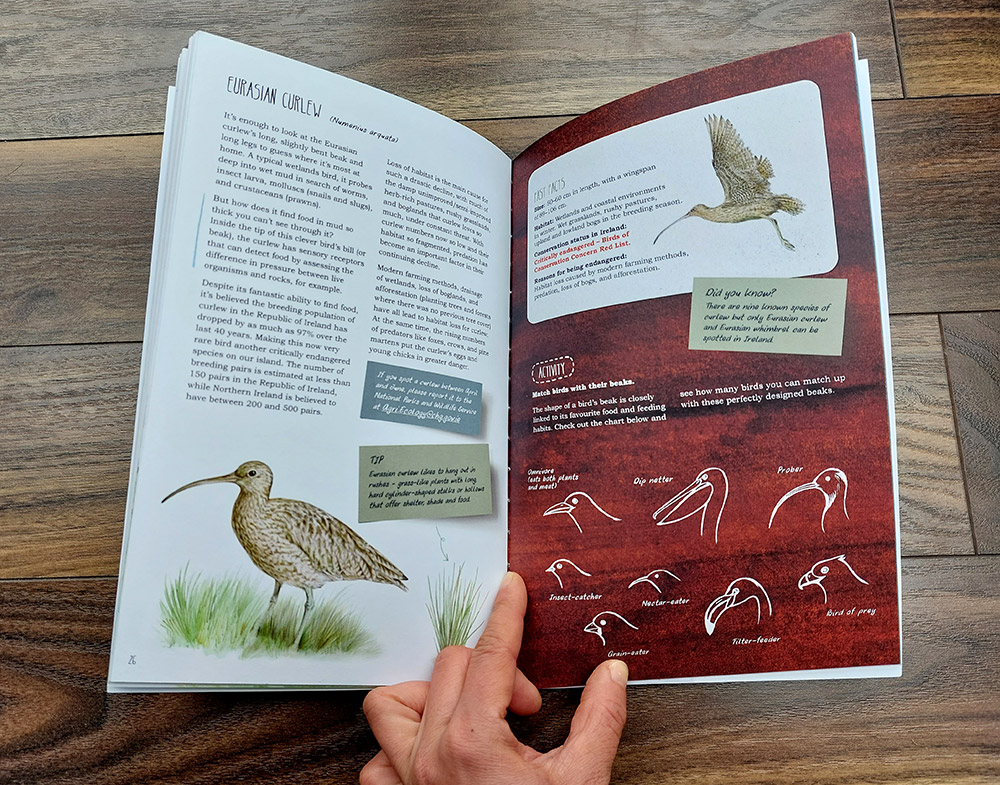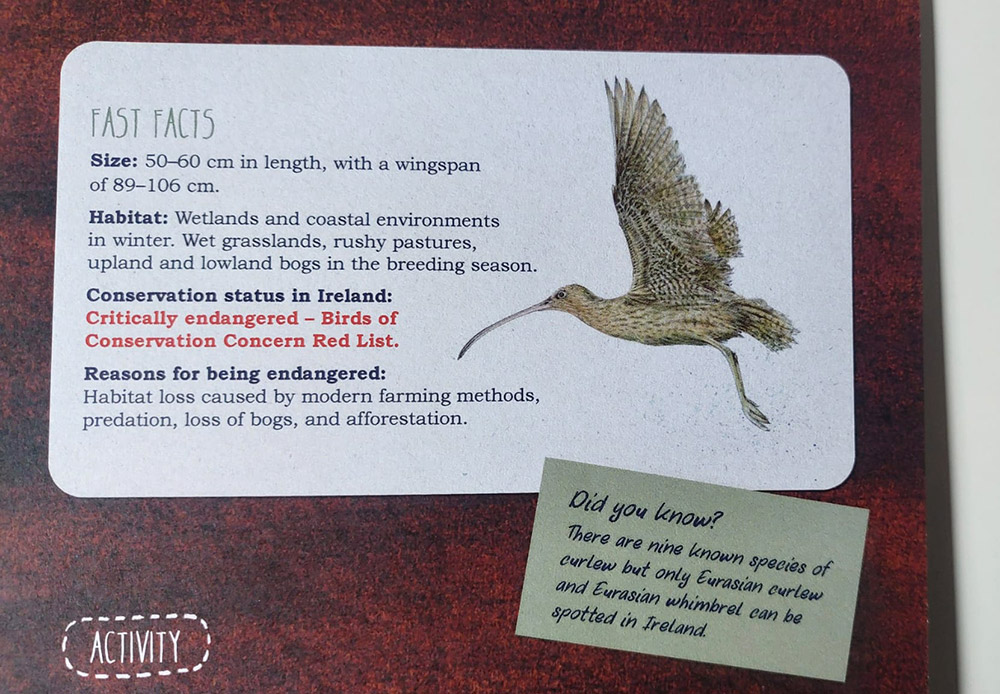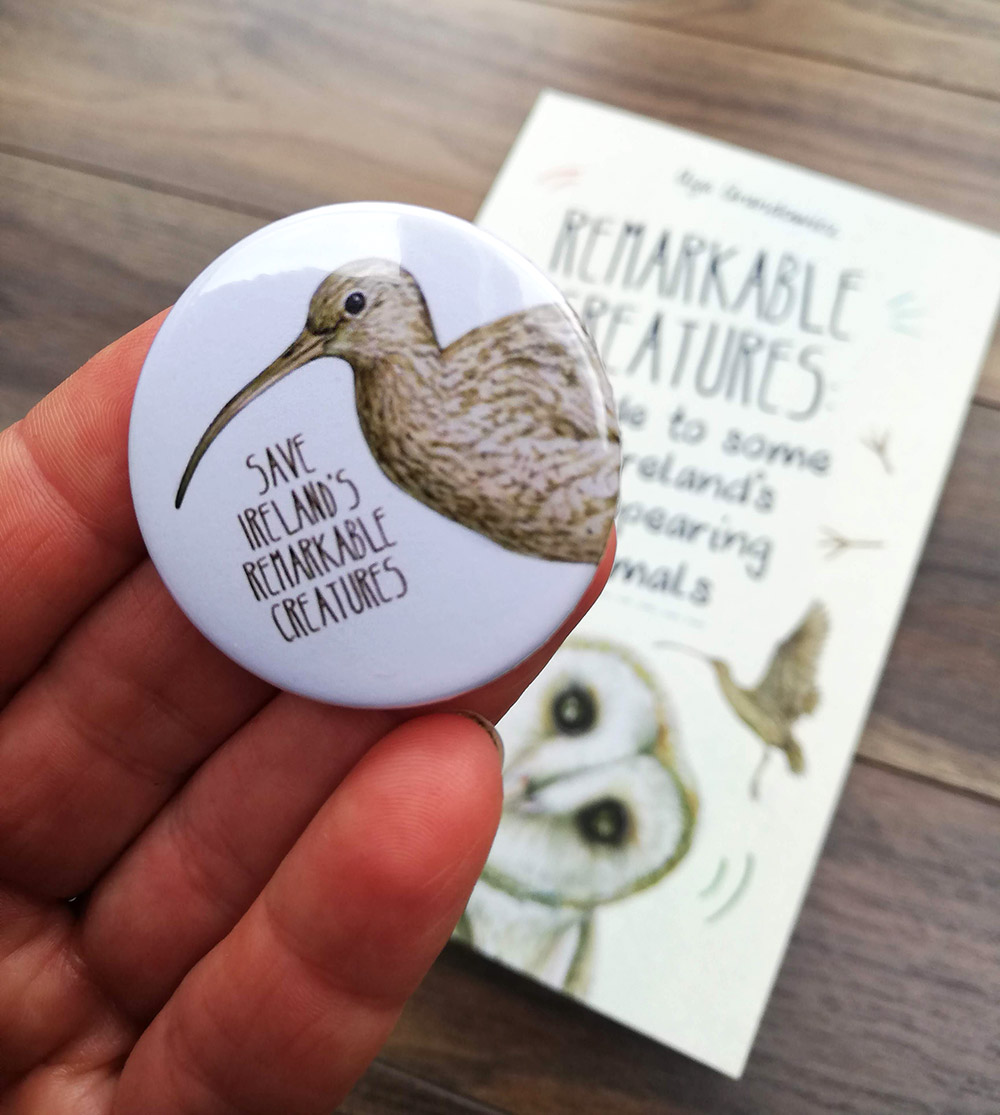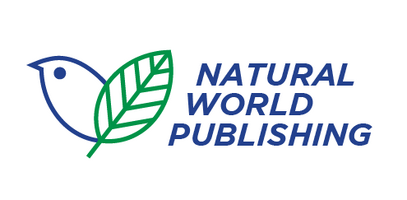FREE delivery for books within the Republic of Ireland
Eurasian Curlew: A Detailed Look at Ireland’s Endangered Bird
The Eurasian Curlew, with its distinctive long, curved bill and evocative call, is one of Ireland’s most iconic bird species. Featured in Aga Grandowicz’s Remarkable Creatures: A Guide to Some of Ireland’s Disappearing Animals, this bird’s story is a poignant reminder of nature’s fragility and the urgent need for conservation.
What is the Eurasian Curlew?
The Eurasian Curlew, scientifically known as Numenius arquata, is the largest European wading bird. It is easily identifiable by its long, down-curved bill, which it uses to probe mudflats and estuaries for food. The bird's feathers are mainly brown with detailed markings, blending seamlessly into its surroundings for effective camouflage.
The Lifecycle of Eurasian Curlew
Breeding
Eurasian Curlews breed in various open habitats, including moorlands, grasslands, and coastal marshes. In Ireland, they typically nest from April to July. The female lays about 3-4 eggs, which both parents incubate.
Migration
After the breeding season, curlews migrate to coastal regions for the winter. They are long-distance migrants travelling to areas as far as North Africa and the Middle East.
Wintering
In winter, Eurasian Curlews inhabit coastal mudflats and estuaries, feeding primarily on invertebrates. Ireland’s west coast is a crucial wintering ground for many of these birds.
Habitat of Eurasian Curlew
Eurasian Curlews prefer open, wet habitats. In Ireland, they are found in upland bogs, lowland wet grasslands, and coastal mudflats. Key regions include the Shannon Callows, the Slieve Aughty Mountains, and various estuaries along the west coast.
Eurasian Curlew in Irish Culture
The Eurasian Curlew holds a special place in Irish culture and folklore. Its melancholic call is often associated with the wilderness and the changing seasons. In Irish mythology, the curlew’s call is sometimes linked to omens and messages from the otherworld.
Current Status of Eurasian Curlew in Ireland
The Eurasian Curlew’s population in Ireland has declined sharply over the past few decades. It is now considered a critically endangered species in the country. This decline is attributed to various factors, including habitat loss and increased predation.
Threats to Eurasian Curlew
Habitat Loss
Agricultural intensification, drainage of wetlands, and urban development have significantly reduced the available breeding and feeding grounds for curlews.
Predation
Increased predation by foxes, crows, and other animals, partly due to changes in land use, has also impacted curlew populations.
Climate Change
Changing weather patterns and rising sea levels pose additional threats to the curlew’s habitats, particularly their coastal wintering grounds.
Human Disturbances
Human activities such as recreational use of coastal areas and disturbances from dogs and vehicles can disrupt feeding and breeding curlews.
Conservation Efforts
Government Initiatives
The Irish government has implemented several measures to protect Eurasian Curlews, including habitat restoration projects and legal protections for nesting sites.
NGOs and Local Community Efforts
Non-governmental organisations and local communities are vital in the conservation of curlews. Efforts include monitoring populations, protecting nesting sites, and raising public awareness.
International Cooperation
As migratory birds, Eurasian Curlews benefit from international conservation efforts. Initiatives like the African-Eurasian Migratory Waterbird Agreement (AEWA) help coordinate protection across borders.
How You Can Help
Supporting Conservation Organisations
Donating to or volunteering with organisations dedicated to curlew conservation can make a significant impact. These groups often rely on public support to fund their efforts. Check Bird Watch Ireland and National Parks and Wildlife Service to see if they have any initiatives related to Eurasian curlew.
Advocating for Habitat Protection
Advocating for the protection and restoration of wetland habitats is crucial. Supporting policies that safeguard these environments can help ensure the survival of the Eurasian Curlew.
Reducing Personal Environmental Impact
Simple actions like reducing plastic use, conserving water, and minimising disturbances in natural habitats can collectively help protect curlew populations.
Why Saving the Eurasian Curlew Matters
Saving the Eurasian Curlew is vital for maintaining ecological balance, preserving cultural heritage, and ensuring biodiversity. Their presence in Ireland’s landscapes is an indicator of healthy ecosystems, which benefit all forms of life, including humans.
Future Prospects for Eurasian Curlew
While the Eurasian Curlew faces significant challenges, there is hope. Conservation efforts are gaining momentum, and with continued support, the future of this species can be secured. Collective action from governments, communities, and individuals is essential to ensure these remarkable birds thrive.
The Role of ‘Remarkable Creatures: A Guide to Some of Ireland’s Disappearing Animals’
Aga Grandowicz’s book, ‘Remarkable Creatures: A Guide to Some of Ireland’s Disappearing Animals’, aimed at children, is vital in highlighting the challenges faced by endangered species like the Eurasian Curlew.
The book is packed with practical activities focused on each described animal, making it an ideal and useful gift for any child who loves learning about nature and conservation.
FAQs
What is the lifespan of a Eurasian Curlew?
Eurasian Curlews can live up to 20 years, although their average lifespan in the wild is around 10-15 years, depending on environmental conditions and predation.
How can I identify a Eurasian Curlew?
Eurasian Curlews have a distinctive long, down-curved bill and brown, streaked plumage. Their call is a unique, haunting sound that is often heard in their habitats.
Where can I see Eurasian Curlews in Ireland?
You can see Eurasian Curlews in places like the Shannon Callows, the Slieve Aughty Mountains, and various coastal mudflats, particularly during the winter months.
What are the main threats to Eurasian Curlews?
The primary threats are habitat loss from agricultural practices and urban development, afforestation, increased predation, climate change, and human disturbances.
How can I contribute to the conservation of Eurasian Curlews?
You can contribute by supporting conservation organisations, advocating for habitat protection, reducing your environmental impact, and spreading awareness about the importance of protecting Eurasian Curlews.
Display prices in:EUR




